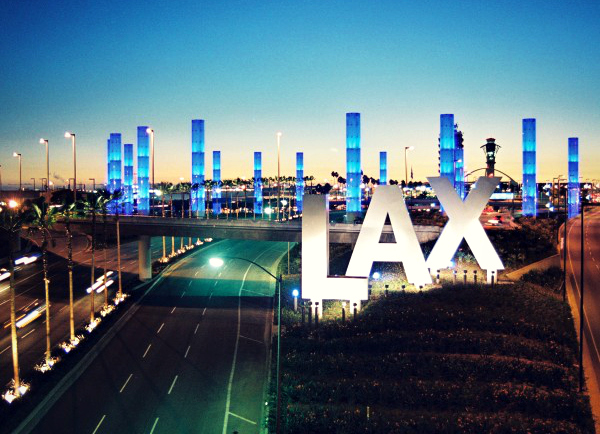Originally posted at Fox & Hounds Daily.
By Joe Matthews.
Ask a person from Los Angeles what the city’s signature public place is, and you’d probably hear about Griffith Park, Dodger Stadium, the Hollywood Bowl, or a favorite beach. But such places represent the best of L.A.; they aren’t who we really are. The truly emblematic space of early 21st century Los Angeles is, for better and worse, Los Angeles International Airport.
Like L.A. itself, LAX is rundown and rapidly aging. The airport is more than 80 years old, and Los Angeles’ population is getting old right along with it, in part because of a rapid decline in its number of young children. LAX and Los Angeles are still big, but other airports and cities have grown faster. The airport and Los Angeles alike have belatedly taken on ambitious new infrastructure projects (the newly enhanced Bradley International Terminal, or new Metro rail lines and schools in L.A.), but there’s a fear we may already have fallen too far behind.
LAX’s centrality, and its flaws, came to the fore again in last week’s tragic shooting of three people, including Transportation Security Administration agent Gerardo Hernandez, who was killed. The shooter managed to get through security and much of Terminal 3 before being stopped. And while the carnage was limited to that single terminal, the airport terminals are so close together that the rest of the airport had to be shut for hours. Air traffic was grounded and much of the city was brought to a halt. Thousands of people parked and stood on streets and sidewalks outside, waiting for LAX, which is to say Los Angeles, to open again.
LAX’s importance to Los Angeles is in a part a product of the city’s famous sprawl. When a metropolis has no acknowledged center, the one place everyone has in common is the city’s gate. And when that city is an island like L.A., cut off from the rest of civilization by the ocean, mountains, desert, and Orange County traffic, the most significant gate is the most significant airport.
LAX is not, at least primarily, a crossroads. Other American airports—Chicago O’Hare, Atlanta—are busier because of all the passengers changing planes there. But LAX has in some years been the world’s leading “origin and destination” airport, which means that the airport has more non-connecting passengers than anyplace else.
To spin that claim with some local pride: When it comes to failures to connect, nobody can compete with Los Angeles. The City of Angels is a weigh station for only two places: Heaven and Hell. Even those who actively seek the destruction of civilization understand this. When Miley Cyrus wanted to “Party in the U.S.A.,” she began by singing, “I hopped off the plane at LAX.” When Al Qaeda decided to attack Los Angeles on New Year’s Eve 1999, LAX was its target. (The bomber was stopped and captured by alert border agents in Washington state.)
At a moment when Los Angeles is enduring a ridiculously overhyped celebration of the L.A. Aqueduct, it’s easy to forget that it was flying machines, not imported water (a feature of major cities only since ancient Rome), that really distinguished Southern California. Very early in the 20th century, we became a leader in building planes and weapons and other flying things that helped connect faraway Los Angeles to the world.
Aerospace was an economic anchor and a force for middle-class advancement. You are reading this column in no small part because, nearly 70 years ago, my grandmother, an Okie with a high school education, found an entry-level job at North American Aviation’s facility on Imperial Highway south of Los Angeles Airport, which had just changed its name from Mines Field. The gig was her ticket to the middle class; the company, and its successors, would educate her to the point where she could work on the wiring of space shuttles. LAX has long been a force for mobility of all kinds, but too many Angelenos—especially some people who live near the airport and block its expansion plans—treat LAX as a liability. As a result, LAX and its many surrounding businesses have remained embarrassingly shabby. Hotel workers along Century corridor have been so poorly paid that they’ve been organizing to join unions. The fact that we haven’t done more for this area is a civic embarrassment.
LAX, of course, is hardly the only common space in L.A. that has been neglected. In fact, we Angelenos pride ourselves less on our central gathering places than on knowing how to get in and out of them as quickly as possible. And we prefer to nurture alternatives rather than remaking the main option. So we fly out of Burbank or John Wayne or Long Beach whenever we can. Those wealthy enough to buy or rent their own planes have helped make Van Nuys one of the world’s busiest general aviation airports.
But the dirty secret is that many Angelenos have accommodated themselves to LAX’s deficiencies. Parking and airfares are relatively cheap. And LAX’s compact U-shaped layout, which can create excruciating traffic at busy times, is easy to navigate if you time it right or know the perfect route in. (I’m partial to coming in on 96th Street and using the Park N’ Fly right next to Terminal 1.) Some glittering mega-airports, like SFO, don’t work nearly as well.
It’s possible that $4 billion in renovations and a rail connection will remake LAX over the next 20 years. But it’s also possible that LAX will remain pretty much the same scuzzy place, and no one will much mind. As Randy Newman sang of the “bum down on his knees” in his half-celebratory, half-ironic anthem of Los Angeles, we love it. We love LAX.





